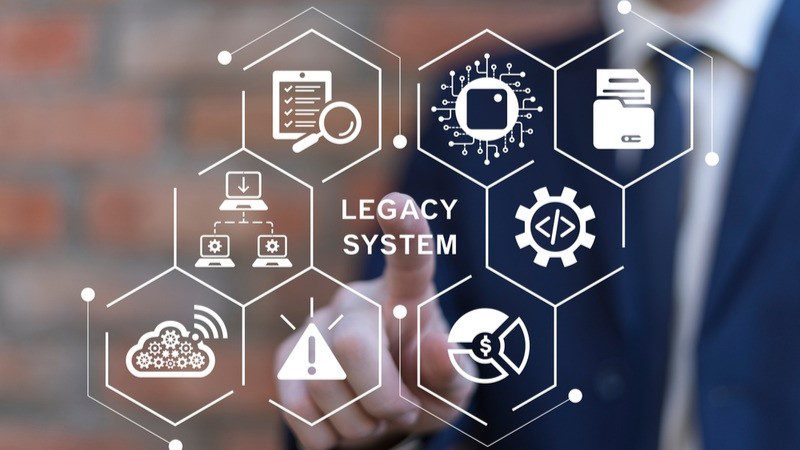Legacy systems—those outdated software platforms, databases, and infrastructure still running critical business operations—can be a major bottleneck to growth, innovation, and security. While these systems may have served well in the past, they often lack the flexibility, scalability, and integration capabilities needed in today’s fast-paced digital environment. Modernizing legacy systems is not just a technical upgrade—it’s a strategic move that can transform how your business operates. With the help of experienced IT consultants, organizations can navigate this complex process efficiently and unlock new levels of performance and agility.
🧠 Evaluating Legacy Systems for Modernization
The first step in modernization is a thorough evaluation of your existing systems. IT consultants begin by assessing the architecture, performance, security, and business relevance of each legacy component. This includes identifying which systems are mission-critical, which ones are redundant, and which pose security or compliance risks.
Consultants also analyze how these systems interact with newer technologies and whether they support current business goals. This evaluation helps create a clear roadmap for modernization—whether it involves rehosting, replatforming, refactoring, or replacing the legacy system entirely. By understanding the strengths and limitations of your current setup, IT experts can recommend the most cost-effective and impactful modernization strategy.
🔗 Ensuring Seamless Integration with Modern Platforms
One of the biggest challenges with legacy systems is their inability to integrate with modern platforms like cloud services, APIs, and mobile applications. IT consultants specialize in bridging this gap. They design and implement integration layers that allow legacy systems to communicate with newer technologies without disrupting operations.
This might involve building middleware, using microservices architecture, or deploying API gateways. The goal is to create a unified ecosystem where data flows smoothly across platforms, enabling real-time analytics, automation, and improved user experiences. Seamless integration not only enhances functionality but also extends the life of legacy systems while preparing the business for future innovations.
☁️ Migrating to Cloud-Based Infrastructure
Migrating legacy systems to the cloud is one of the most effective ways to modernize. IT consultants help businesses choose the right cloud model—public, private, or hybrid—and develop a migration plan that minimizes downtime and data loss. They also ensure that the new cloud environment is secure, scalable, and optimized for performance.
Cloud migration offers numerous benefits: reduced infrastructure costs, improved accessibility, automatic updates, and enhanced disaster recovery. Consultants also help reconfigure legacy applications to run efficiently in cloud environments, using containerization and virtualization techniques. With expert guidance, businesses can transition smoothly and start leveraging the full power of cloud computing.
🔐 Upgrading Security and Compliance Standards
Legacy systems often lack modern security features, making them vulnerable to cyberattacks and non-compliant with current regulations. IT consultants play a crucial role in upgrading these systems to meet today’s security and compliance standards. This includes implementing encryption, access controls, firewalls, and intrusion detection systems.
Consultants also ensure that legacy systems comply with industry regulations such as GDPR, HIPAA, or PCI-DSS, depending on the business domain. They conduct regular audits, patch vulnerabilities, and establish protocols for data protection and incident response. By modernizing security infrastructure, businesses can protect sensitive data, avoid legal penalties, and build customer trust.
⚙️ Automating and Optimizing Legacy Workflows
Legacy systems often rely on manual processes that are time-consuming and error-prone. IT consultants help automate these workflows using modern tools and platforms. This includes integrating robotic process automation (RPA), business process management (BPM) systems, and AI-driven analytics.
Automation not only improves efficiency but also reduces operational costs and enhances accuracy. Consultants also optimize legacy workflows by redesigning them to align with current business needs and technology capabilities. This transformation enables faster decision-making, better resource allocation, and a more agile organization.
🧰 Training Teams and Managing Change
Modernizing legacy systems isn’t just a technical challenge—it’s a cultural one. Employees accustomed to old systems may resist change or struggle to adapt. IT consultants provide training and change management support to ensure a smooth transition. They create user-friendly documentation, conduct workshops, and offer hands-on support during rollout.
Consultants also work with leadership to communicate the benefits of modernization and foster a culture of innovation. By involving stakeholders early and addressing concerns proactively, they help build confidence and ensure that the new systems are embraced across the organization.
📈 Future-Proofing Your Business with Scalable Solutions
The ultimate goal of modernization is to future-proof your business. IT consultants design scalable, flexible systems that can evolve with your needs. This includes adopting modular architectures, cloud-native applications, and data-driven platforms that support growth and innovation.
They also stay ahead of emerging trends—like edge computing, AI integration, and blockchain—to ensure your infrastructure remains competitive. With a forward-thinking approach, consultants help businesses not only solve today’s challenges but also prepare for tomorrow’s opportunities.


